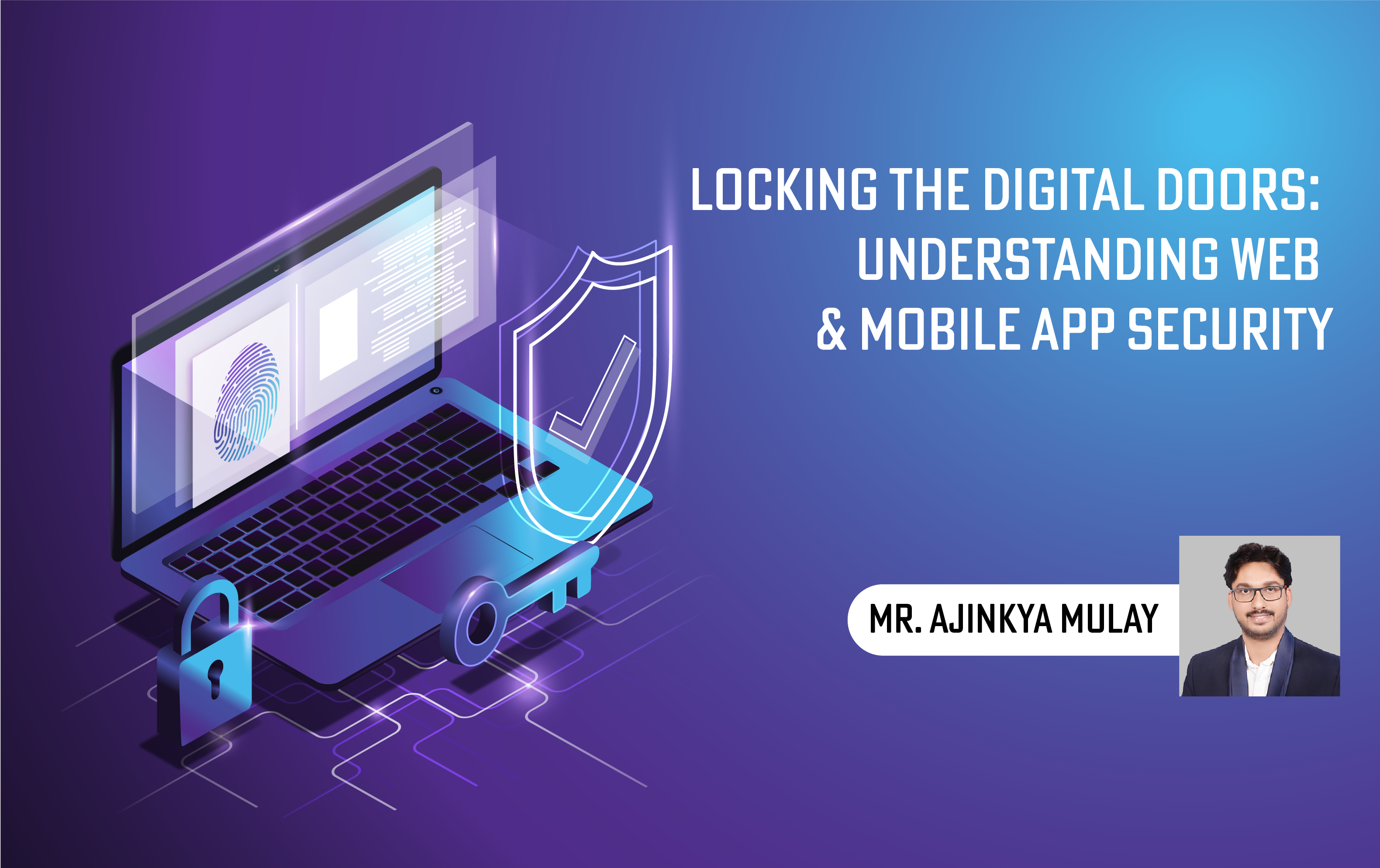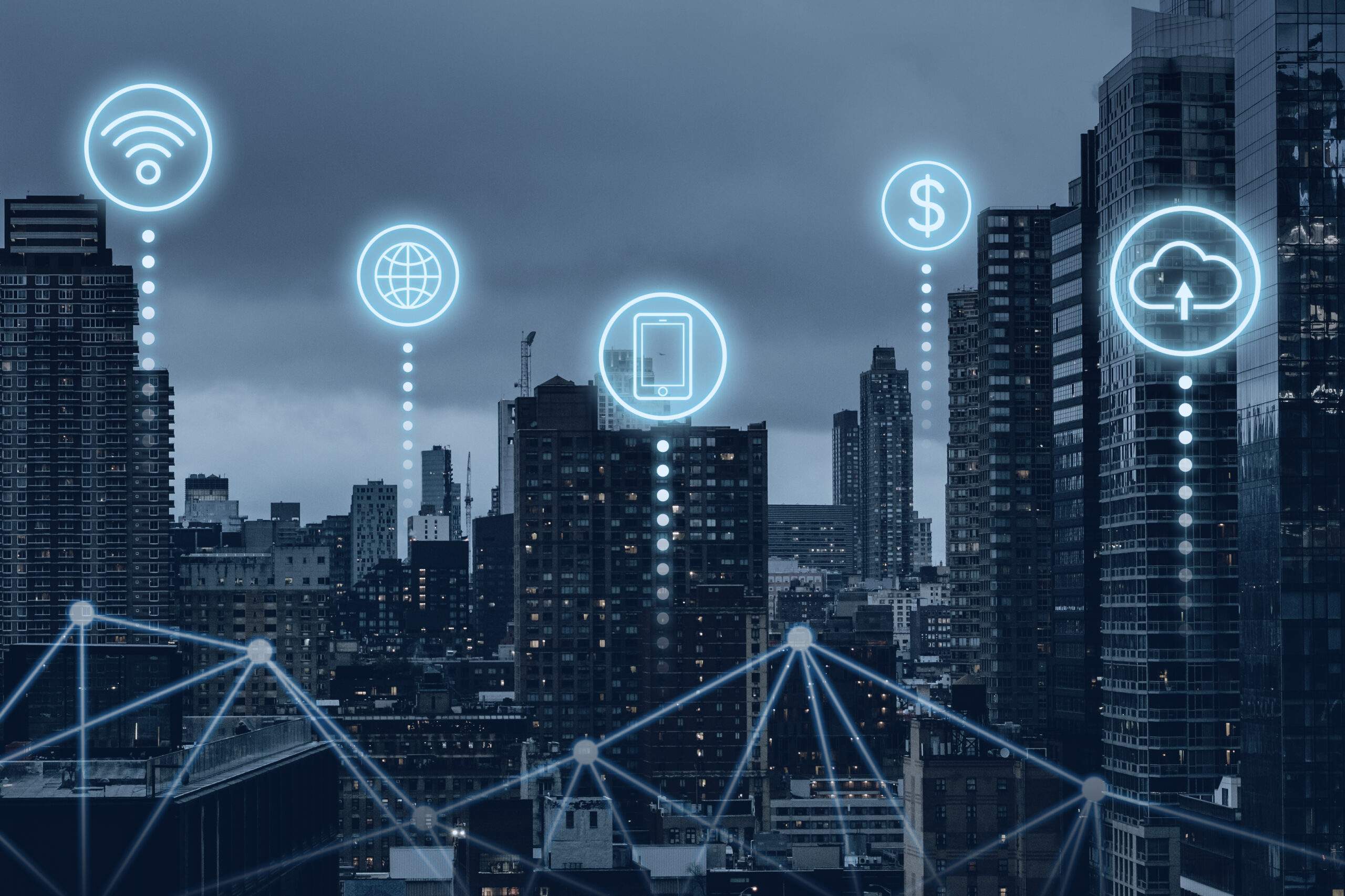Locking the Digital Doors: Understanding Web and Mobile App Security
In our digital world, apps on our phones and websites we visit are like doors to a house. But just like we lock our doors to keep bad guys out, we need to protect these apps from cyber bad guys. One way we do this is through something called a Web Application Firewall, which acts like a security guard for our apps. It stops the bad guys from sneaking in and causing trouble.
Another important thing to know is that these apps talk to each other using something called APIs. APIs help them share information. But if not handled carefully, they can accidentally spill sensitive information. OWASP help us understand the risks associated with these APIs, so we can make sure our apps are safe and sound. Together, let’s learn more about keeping our apps safe and our digital world secure!
- Web and Mobile application Security
Securing web and mobile applications is crucial to protect sensitive data and ensure user safety. Here are the top 10 things to do:
- Authentication and Authorization: Implement strong user authentication and authorization mechanisms to ensure that only authorized users can access certain features or data.
- Data Encryption: Use encryption techniques (SSL/TLS) to protect data transmission between the client and server. Also, encrypt sensitive data at rest.
- Input Validation: Validate and sanitize all user inputs to prevent common vulnerabilities like SQL injection and cross-site scripting (XSS).
- Session Management: Implement secure session management practices to prevent session hijacking and fixation attacks.
- API Security: Secure your APIs with authentication tokens, rate limiting, and proper access controls. Use API keys or OAuth for authorization.
- Code Review and Testing: Regularly review and test your code for vulnerabilities. Use static analysis and dynamic testing tools to identify and fix security issues.
- Patch Management: Keep all software components, libraries, and frameworks up to date with the latest security patches.
- Error Handling: Implement proper error handling to avoid revealing sensitive information in error messages.
- Security Headers: Use security headers like Content Security Policy (CSP), HTTP Strict Transport Security (HSTS), and Cross-Origin Resource Sharing (CORS) to control browser behavior.
- Security Training and Awareness: Train your development and QA teams in secure coding practices and keep them updated on the latest security threats and best practices.
- Regular security audits and penetration testing should also be part of your security strategy to proactively identify and mitigate vulnerabilities in your web and mobile applications.

2. Top 10 OWASP API Security Risk
The Open Web Application Security Project (OWASP) provides a list of the top 10 most critical web application security and API Risk official website (https://owasp.org)
API1:2023 – Broken Object Level Authorization–
APIs tend to expose endpoints that handle object identifiers, creating a wide attack surface of Object Level Access Control issues. Object level authorization checks should be considered in every function that accesses a data source using an ID from the user.
API2:2023 – Broken Authentication–
Authentication mechanisms are often implemented incorrectly, allowing attackers to compromise authentication tokens or to exploit implementation flaws to assume other user’s identities temporarily or permanently. Compromising a system’s ability to identify the client/user, compromises API security overall
API3:2023 – Broken Object Property Level Authorization–
This category combines API3:2019 Excessive Data Exposure and API6:2019 – Mass Assignment, focusing on the root cause: the lack of or improper authorization validation at the object property level. This leads to information exposure or manipulation by unauthorized parties.
API4:2023 – Unrestricted Resource Consumption–
Satisfying API requests requires resources such as network bandwidth, CPU, memory, and storage. Other resources such as emails/SMS/phone calls or biometrics validation are made available by service providers via API integrations, and paid for per request. Successful attacks can lead to Denial of Service or an increase of operational costs.
API5:2023 – Broken Function Level Authorization–
Complex access control policies with different hierarchies, groups, and roles, and an unclear separation between administrative and regular functions, tend to lead to authorization flaws. By exploiting these issues, attackers can gain access to other users’ resources and/or administrative functions
API6:2023 – Unrestricted Access to Sensitive Business Flows–
APIs vulnerable to this risk expose a business flow – such as buying a ticket, or posting a comment – without compensating for how the functionality could harm the business if used excessively in an automated manner. This doesn’t necessarily come from implementation bugs.
API7:2023 – Server Side Request Forgery–
Server-Side Request Forgery (SSRF) flaws can occur when an API is fetching a remote resource without validating the user-supplied URI. This enables an attacker to coerce the application to send a crafted request to an unexpected destination, even when protected by a firewall or a VPN.
API8:2023 – Security Misconfiguration–
APIs and the systems supporting them typically contain complex configurations, meant to make the APIs more customizable. Software and DevOps engineers can miss these configurations, or don’t follow security best practices when it comes to configuration, opening the door for different types of attacks.
API9:2023 – Improper Inventory Management–
APIs tend to expose more endpoints than traditional web applications, making proper and updated documentation highly important. A proper inventory of hosts and deployed API versions also are important to mitigate issues such as deprecated API versions and exposed debug endpoints.
API10:2023 – Unsafe Consumption of APIs–
Developers tend to trust data received from third-party APIs more than user input, and so tend to adopt weaker security standards. In order to compromise APIs, attackers go after integrated third-party services instead of trying to compromise the target API directly.
3. Importance of WAF web application firewall
A Web Application Firewall (WAF) is a crucial component in modern cybersecurity, primarily focused on protecting web applications from a variety of online threats and attacks. Here are several key reasons highlighting the importance of WAF:
- Protection from Web Application Attacks: WAFs are designed to defend against common web application attacks, including SQL injection, cross-site scripting (XSS), cross-site request forgery (CSRF), and more. These attacks can compromise data integrity, steal sensitive information, or disrupt application functionality.
- Zero-Day Attack Mitigation: WAFs can detect and mitigate new and emerging threats, even before patches or security updates are available. They do this by analyzing incoming traffic patterns and behavior anomalies.
- Reduced Attack Surface: By filtering and monitoring incoming web traffic, WAFs help reduce the attack surface of web applications. They can block malicious requests before they reach the application server, minimizing the risk of exploitation.
- DDoS Attack Mitigation: Some advanced WAFs have Distributed Denial of Service (DDoS) protection capabilities. They can identify and mitigate large-scale traffic floods, helping maintain service availability during attacks.
- Compliance Requirements: Many regulatory standards and compliance frameworks, such as PCI DSS and HIPAA, mandate the use of security measures like WAFs to protect sensitive data. Implementing a WAF can help organizations meet these requirements.
- Logging and Auditing: WAFs provide detailed logs of incoming traffic and blocked threats. These logs can be invaluable for security audits, incident response, and forensic analysis.
- Real-Time Threat Monitoring: WAFs offer real-time monitoring of web traffic, enabling security teams to identify and respond to threats quickly. They can trigger alerts or automated responses to specific attack patterns.
- Traffic Normalization: WAFs can normalize incoming traffic, filtering out malicious or malformed requests. This helps ensure that only legitimate, well-formed requests reach the application, improving its overall stability.
- Protection for Legacy Applications: WAFs can protect older or legacy web applications that may not have been built with modern security practices in mind. They act as an additional layer of security for such applications.
- Cost-Efficient Security: Implementing a WAF can be more cost-effective than addressing vulnerabilities and responding to security incidents after an attack has occurred. It provides proactive, continuous protection.
In summary, a Web Application Firewall is a critical security component for safeguarding web applications from a wide range of threats. It helps organizations maintain the confidentiality, integrity, and availability of their web services and sensitive data.
- Simple antivirus software is designed primarily to detect and remove known malware and viruses based on predefined signatures and patterns. While antivirus programs are important for basic protection, they have limitations that make them insufficient in today’s complex cybersecurity landscape.
Here’s why EDR (Endpoint Detection and Response) is necessary:
1.Limited Detection Capabilities: Antivirus relies on known signatures and patterns to identify threats. It may miss zero-day attacks and sophisticated malware that haven’t been previously identified.
2.Lack of Behavioral Analysis: EDR solutions monitor the behavior of files and processes on an endpoint. They can detect suspicious activities, such as unusual system behavior or data exfiltration, even if there are no known malware signatures involved.
3.Advanced Threats: EDR solutions are better equipped to detect advanced threats like fileless malware and polymorphic malware that can change their code to evade traditional antivirus scans.
4.Incident Response: EDR provides real-time monitoring and alerting, helping organizations respond quickly to security incidents. Antivirus software typically lacks these features.
5.Visibility and Investigation: EDR solutions provide detailed information about endpoint activity, allowing security teams to investigate incidents thoroughly, trace the source of an attack, and understand its scope.
6.Threat Hunting: EDR enables proactive threat hunting. Security analysts can search for signs of compromise and anomalies to detect threats that may have gone unnoticed by traditional antivirus.
7.Compliance and Reporting: EDR solutions often provide extensive reporting capabilities, which are crucial for compliance with data protection regulations and for demonstrating a proactive approach to security.
8.Adaptive Protection: EDR can adapt its response to evolving threats, applying behavioral analysis and machine learning to identify new attack patterns.
In summary, while antivirus software is a fundamental layer of protection, EDR complements it by offering advanced threat detection, real-time monitoring, incident response capabilities, and the ability to investigate and mitigate complex security incidents. In today’s rapidly evolving threat landscape, EDR is a critical component of a comprehensive cybersecurity strategy.
This blog emphasizes the critical importance of securing web and mobile applications in our digital era. It highlights the escalating threat landscape targeting crucial elements of our digital infrastructure. APIs (Application Programming Interfaces) are crucial for application functionality but can pose significant security risks if not adequately protected. The OWASP API Security Top 10 is a vital resource that sheds light on prevalent vulnerabilities in the API landscape. The blog delves into these risks, providing a comprehensive analysis of their implications and suggesting potential solutions. Additionally, the blog underlines the fundamental role of a Web Application Firewall (WAF) in enhancing digital security by monitoring and filtering traffic, acting as a defense against cyber threats. It invites readers to join this journey to enhance their understanding of web and mobile application security, fostering a safer digital future.



